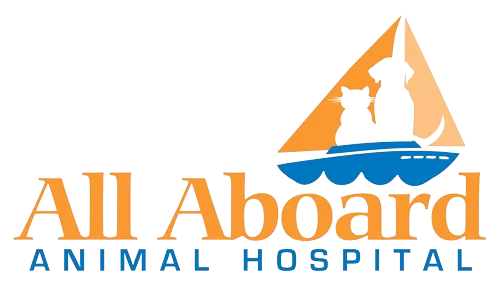Our homes are filled with potential dangers we often overlook—especially when it comes to our pets. From cleaning products in the bathroom to snacks in the kitchen, each room contains items that can be harmful to curious animals. March is Pet Poison Prevention Month, the ideal time to evaluate your living space and make it safer for cats and dogs. At All Aboard Animal Hospital, we want to help you identify toxic hazards throughout your home so that you can create a secure environment for your pets.
Pet Poison Hazards in the Kitchen and Living Areas
The kitchen is one of the most hazardous places for pets due to toxic food exposure, and even relaxing areas like the living room have hidden dangers.
- Toxic Foods: Chocolate, grapes, onions, garlic, xylitol, and alcohol are dangerous to pets.
- Cleaning Supplies: Bleach, toilet bowl cleaners, and other chemical cleaning agents can be harmful if swallowed or inhaled.
- Detergents and Dryer Sheets: Can cause gastrointestinal issues if chewed or eaten.
- Trash Cans: Pets may tip over or go through unsecured trash bins for leftovers or packaging, leading to choking or poisoning.
- Houseplants: Lilies, sago palms, and poinsettias are just some of the indoor plants that are toxic to pets.
- Essential Oils: Certain scents can cause respiratory issues or poisoning.
- Electrical Cords: Chewing cords can result in electrical burns or electrocution.
- Small Objects: Batteries, coins, pills, and decorative items can be choking hazards or toxic if swallowed.
Garage and Garden Safety for Pets
Don’t forget the yard and outdoor areas when poison-proofing for your cat or dog.
- Antifreeze and Automotive Fluids: Even small amounts can be deadly.
- Rodenticides and Insecticides: Often placed in garages, these poisons are highly attractive and can be lethal to pets.
- Fertilizers and Herbicides: Residues can be ingested when pets lick their paws.
- Compost: Decomposing food can harbor harmful bacteria or be a toxic food.
- Unfamiliar Plants: Outdoor plants like azaleas and foxglove can be extremely toxic.
- Standing Water: While not necessarily poisonous, standing water like puddles can have harmful bacteria or runoff from poisonous substances like pesticides.
Steps to Make Your Home Safe from Pet Toxins
To protect your pets from poisoning risks, store hazardous materials securely. Keep cleaning supplies, medications, and chemicals locked away. Opt for pet-safe alternatives to household products. Choose non-toxic cleaners and fertilizers. Supervise your cats and dogs. Be especially careful to monitor pets in areas where known risks may be present. Educate household members about what items around your home can be dangerous to pets. The ASPCA has several helpful guides on toxic foods, plants, and household products that can be a resource for you and your family.
If your pet does swallow something toxic or is exposed to a toxin, contact your veterinarian for urgent pet care or call a poison control number, like the Pet Poison Helpline.
You Can Prevent Pet Poisoning in Your Home
Every room in your home has the potential to house a toxic hazard for pets. March is Pet Poison Prevention Month, so take a proactive approach to safety this month. A few simple changes can make your living spaces secure and pet-friendly. If you need help evaluating your home for poison risks, All Aboard Animal Hospital is here to assist. Book an appointment in Pompano Beach today for professional guidance on keeping your home safe for pets.

